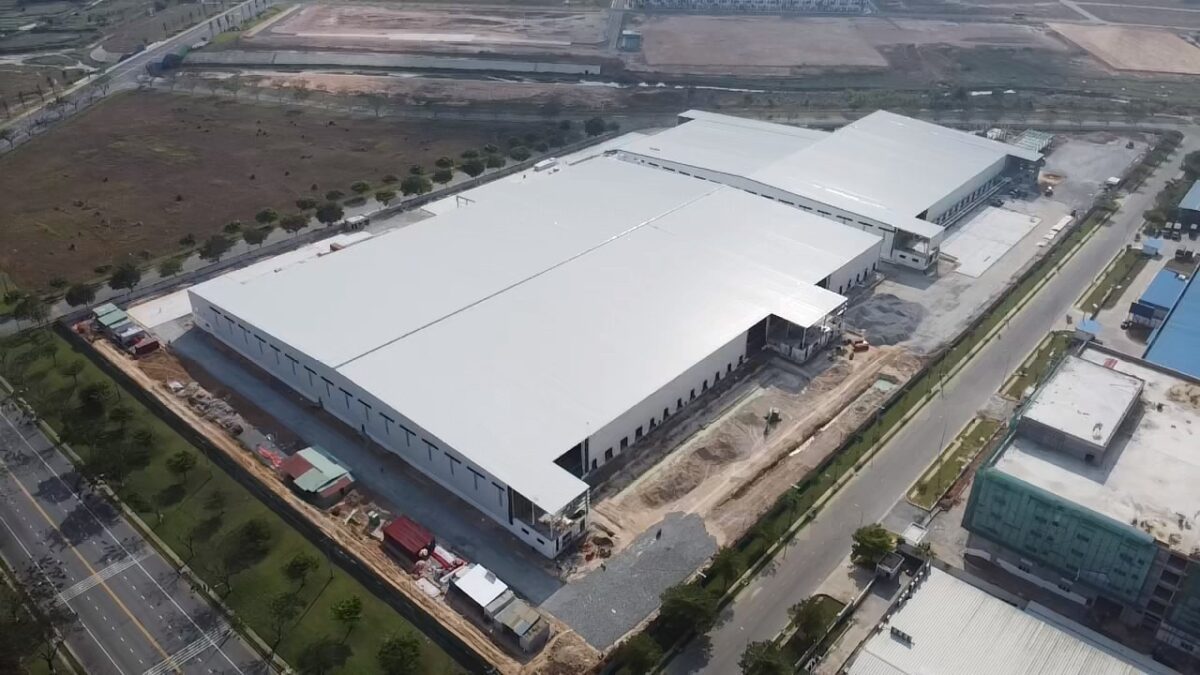Which opportunities is for industrial real estate in 2020?
Mr. John Campbell, head of industrial real estate Department of Vietnam Savills , has just given analysis on situation of the industrial real estate market in Vietnam in the context of the global recession and the impacts on the macroeconomy after signing the EU-Vietnam Free Trade Agreement (EVFTA)

Positive effects from EVFTA
The European Parliament has officially approved the Vietnam – EU Free Trade Agreement (EVFTA) and the EU-Vietnam Investment Protection Agreement (EVIPA), opening up bright prospects for Vietnam’s economic sectors. Male. These agreements will take effect after the ratification of the National Assembly of Vietnam, expected to take place on May this year.

Mr. Campbell stated that EVFTA facilitated Vietnamese economy to transition from exporting low-value products to higher-value goods such as high-tech equipment, electronics, vehicles and healthcare.
Global trade will help Vietnam to approach many different partners, allowing cheaper imports of inputs or intermediate goods, which it will promote competitiveness of export goods.
In addition, through increasing partnerships with foreign companies, Vietnam can reap benefits of transfer of knowledge and technology associated with investments.
Campbell said “when Vietnam opens to European manufacturers in industries such as food and beverage, fertilizers, ceramics and construction materials, elimination of tariffs will also benefit important export industries to Europe, including electronics and smart phone manufacturing, textiles and agricultural products”.
According to him, since June last year, more and more industrial real estate investors in Vietnam are confident that EVFTA will promote investment in production, thereby expanding group of tenants. With the agreement to be ratified this year, investors also expect to see an increase in rental demand from European manufacturers in 2020 and 2021.
when demand continues to outstrip supply, especially in key industrial provinces, with occupancy rates reaching 75% in operating industrial zones across the country, competition for manufacturing zones which its location near big cities and big seaports are increasing.
New international manufacturing units will give investors the right to choose the right tenants, thereby selecting multinational companies in high value-added industries.
The industrial real estate segment is growing strongly, with a 10-fold increase in foreign direct investment (FDI) over the past decade. A good supply of land is facilitating upcoming production projects with an increase in rental options and many other solutions.
And effects of the Covid pandemic 19
In terms of scale of Chinese economy, the Covid 19 pandemic outbreak is sure to have an impact on the global economy in Quarter 1 and even Quarter 2, 2020. Vietnam, with its close trade relationship with China, is no exception.
Mr. Campbell said that although foreign investment in Vietnam’s industrial real estate segment remained well in 2020, Covid 19 caused concerns about labor shortages and disruptions in the supply chain for manufacturing sector in the quarter 1, 2020.
According to him, labor shortage in China which has been prolonged since the Lunar New Year holiday (in addition the factories are temporarily closed) due to the corona virus has caused less production, so it could affect many Vietnamese manufacturers that have supply chain links related to China.
Evidence from Trading Economics shows that index of Vietnam’s industrial production (IIP) decreased 5.5% compared to the same period last year on January 2020, after rising 6.2% on December 2019. .This is the first reduction in production since January 2017.
“The decrease in index of production output is believed to be a consequence of the Chinese New Year holiday coming relatively early at the end of January, leading to a decrease in the number of working days in the month. Therefore, it is difficult to assess rates of output decline in industries that are directly related to Covid 19, ” said Mr Campbell.











